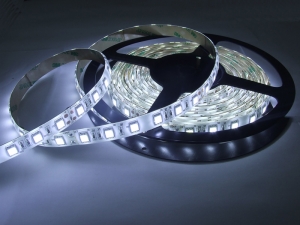[This is a very old article from scanning backlight experiments in 2012]
A 23″ LCD computer monitor is 286mm high x 508mm wide. From math calculations on LED ribbons (120 LED per meter, 6mm wide, 6500K, ~10watt/meter, 80+CRI available), one can put 48 rows of 6mm-width ribbon segments behind a 23″ LCD. That’s a whopping 240 watts of backlight for a 23″ computer monitor!
This will allow 90% motion blur reduction using ultra-short scanning backlight strobes (see FAQ) without a dim picture, 1.6ms strobes at 60Hz, resulting in 24 watt average actual power consumption. Many new 23″ LCD monitors with a LED backlight, adjusted to a comfortable brightness, consume just about 15-20 watts for the backlight itself. I will have brightness left over to go to 95% motion blur reduction, using 0.8ms strobes at 60Hz native refresh (simulating equivalence to 960Hz), or 0.4ms strobes at 120Hz native refresh (simulating equivalence to 1920Hz).
LED ribbons are cheap (search eBay, Alibaba, Google for “LED ribbon”). If you know another inexpensive alternatives of putting nearly 300 watt of backlight behind a 23″ monitor, contact mark[at]scanningbacklight.com






